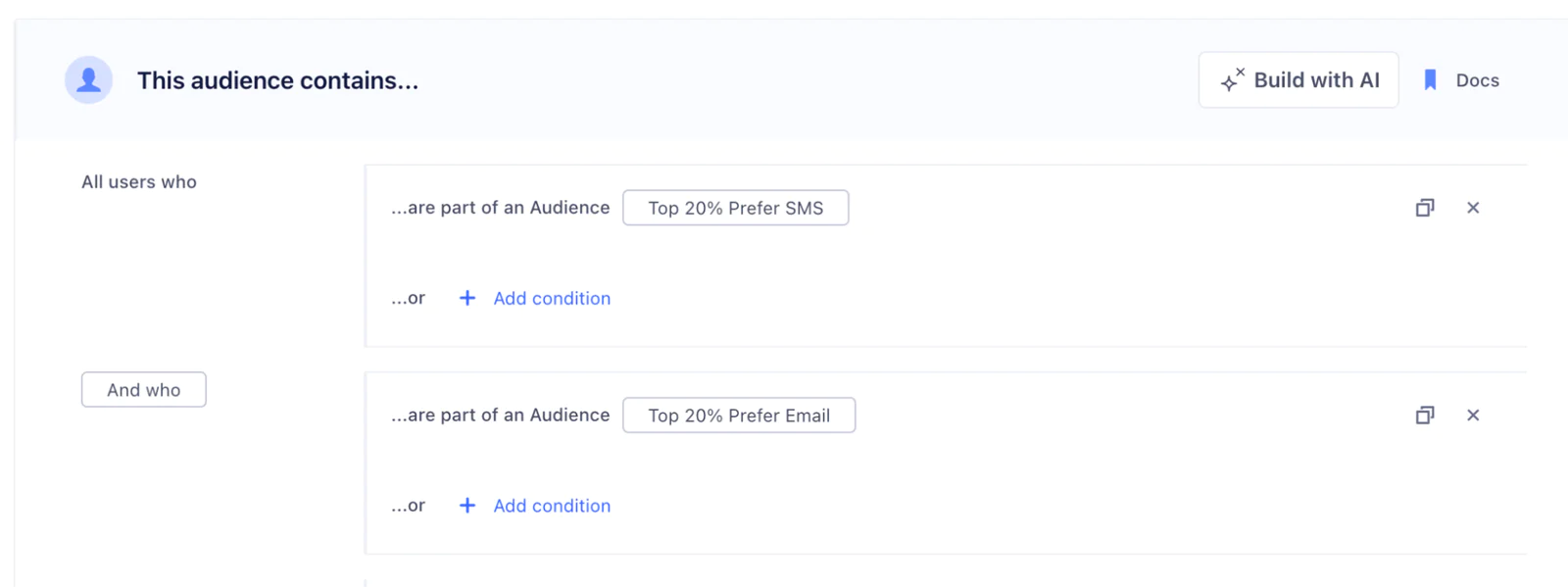Today’s customers don’t want to be bombarded by the same message across every channel they interact with your business. Everyone has different preferences in how they would like to be reached. Some like to be reached by emails, others by text, and some have no clear cut preference.
Channel optimization helps you personalize your communication to customers on the channel they’re most likely to engage with, so you can avoid marketing fatigue and boost engagement while providing a better customer experience.
In this recipe, we will teach you how to use Predictions to determine each user’s preferred communication channel. By using Predictions for channel optimization, you can always reach customers on the best channel for them—keeping subscriber lists healthy, reducing overall spend, and increasing clicks and conversions.
After reading this doc, you should have 3 Audiences:
Most likely to convert on Email
Most likely to convert on SMS
No preference between Email & SMS
Data Requirements
As with anything machine learning, better data = better results. There are a few key events that you should track in order to do this correctly.
Email
Email Sent
Email Opened
Email Link Clicked
Email Unsubscribed
Email Marked as Spam
SMS
SMS Sent
SMS Link Clicked
Ads
Ad Viewed
Ad Link Clicked
You don’t necessarily need all of these events, but your performance will increase if you track events around customers engaging with your marketing content.
Once your data is tracked and has been ingesting for around 30-45 days (but consider using rETL to backfill more data for more accurate predictions), enter the predictive traits builder. Select a Custom Prediction.
You’ll want to build these 2 traits with your events. Predict over a longer time horizon like 120 days to measure general propensity. However, please note that predicting over 120 days will require more data, so if you just started tracking these events, predict over a shorter time horizon.
 Made by Troy Bolus
Made by Troy Bolus




